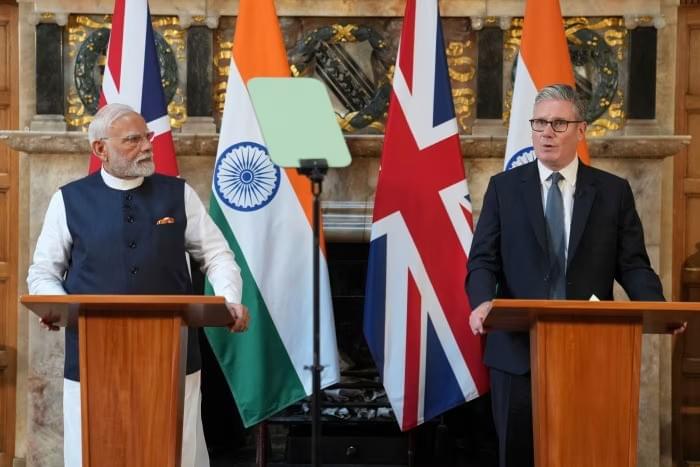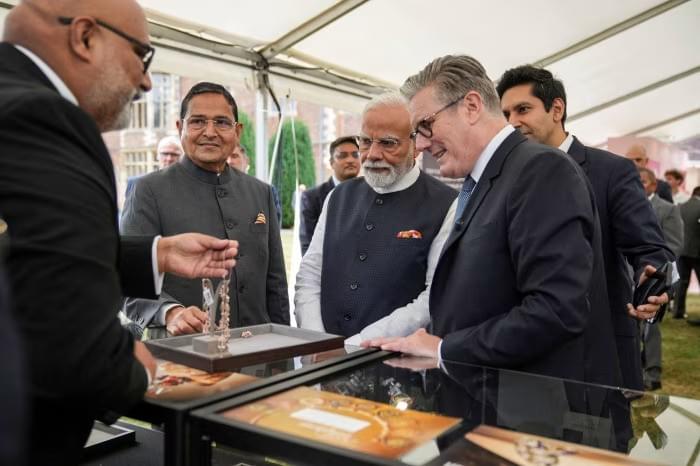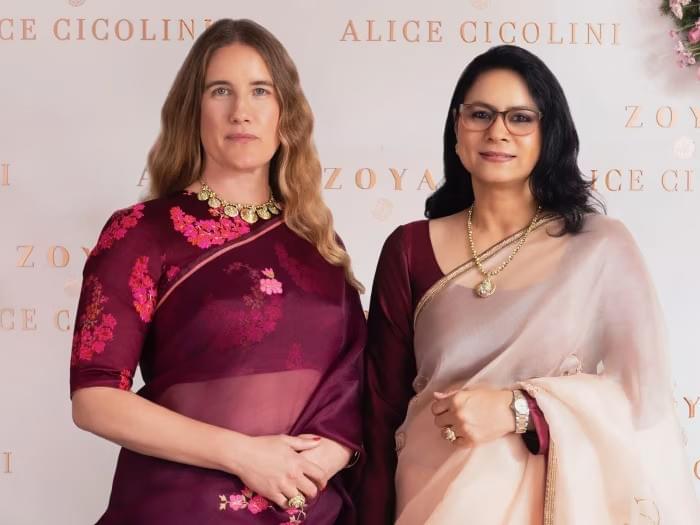
Narendra Modi and Sir Keir Starmer speaking after signing the UK-India trade deal in July
London / Mumbai — The new UK–India trade agreement, signed by Prime Minister Sir Keir Starmer and Narendra Modi, is being hailed as a potential “game changer” for the global jewelry market — but also a spark for fresh tensions over market competition, identity, and what “luxury” really means in a post-tariff world.
The deal removes import duties—previously up to 4%—on jewelry, gemstones, and precious metals imported from India into the UK. While it’s a modest number on paper, the ripple effects could be huge.
“Now, in today’s India, with the latest equipment, we are competing with China and Italy,” said Kirit Bhansali, chair of the Gem & Jewellery Export Promotion Council (GJEPC). “Our craftsmen are making world-class jewelry.”
Bhansali predicts exports from India to the UK will soar from $941 million to $2.5 billion within three years, driven by rising demand from both the South Asian diaspora and a new generation of value-conscious luxury buyers.
A Boon—or a Battle—for British Jewelers
Not everyone in Britain’s jewelry sector is celebrating. Ben Massey, CEO of the National Association of Jewellers (NAJ), voiced what many small UK jewelers are whispering: excitement, yes—but also unease.

Narendra Modi and Sir Keir Starmer speak to PureJewels CEO Jayant Raniga (left) at an event after the signing
With Indian giants like Malabar Gold & Diamonds and Kalyan Jewellers expanding into Birmingham, Leicester, and London, the UK market could soon be awash with high-purity 22-carat gold and competitively priced diamond jewelry.
That’s good news for shoppers—but potentially punishing for independent British makers already struggling with rising costs and slowing luxury demand.
“We must double down on celebrating British manufacturing,” Massey urged, pointing to Birmingham’s recent recognition as a World Craft City for jewelry. “Hallmarking and provenance will be key to transparency.”
Some see this as a chance for “Made in Britain” to become a luxury mark again—others fear being priced out of their own market.
A Two-Way Street of Collaboration
Still, many believe collaboration—not competition—is the way forward. PureJewels CEO Jayant Raniga envisions a “two-way dialogue” between British designers and Indian manufacturers, fusing UK design sensibilities with India’s craftsmanship and scale.

Alice Cicolini (left) recently collaborated with Indian jewellery brand Zoya
Designers like Alice Cicolini are already proving the model works. Her recent collaboration with Zoya, an Indian luxury brand, merged British art deco aesthetics with Indian enamel mastery. “You can’t just import Western design and expect it to resonate in India,” Cicolini said. “It’s about cultural fluency.”
Behind the Curtain: A Shift in Global Power
The timing of this deal is also strategic. Just weeks before, the U.S. imposed 50% tariffs on Indian jewelry and gems—essentially pushing India to pivot toward new partners. The UK, facing post-Brexit trade pressures, is eager to secure stable alliances in fast-growing sectors.
The result? A partnership where India gains access, and Britain gains affordability—but not without friction over how “luxury” is defined when craftsmanship meets cost efficiency.
The Bigger Picture
With hallmarking laws, ethical sourcing, and consumer sentiment all in flux, the jewelry industry may be heading for a new divide:
- On one side, heritage British jewelers emphasizing provenance and artistry.
- On the other, Indian powerhouses bringing scale, technology, and price disruption.
The question now isn’t whether this deal will transform the industry—it’s who will adapt fastest.
👉 Read our Jewelry Industry Guide to understand how new global trade deals—from London to Mumbai—are redefining craftsmanship, competition, and collaboration.
